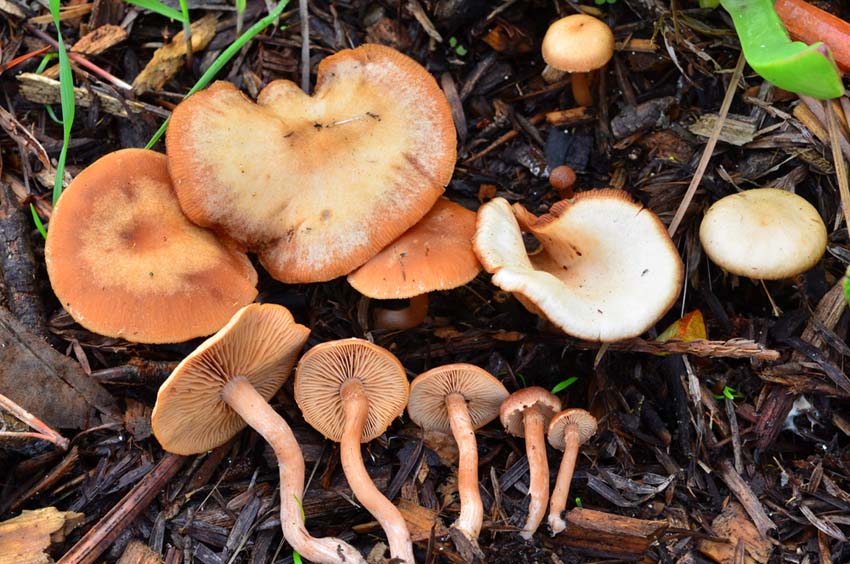
© Christian Schwarz
Danny’s DNA Discoveries – Tubaria, Flammulaster and Phaeomarasmius of the PNW
by Danny Miller
Click here for my Pictorial Key to Tubaria and Flammulaster and Phaeomarasmius
|
|
Danny’s DNA Discoveries – Tubaria, Flammulaster and Phaeomarasmius of the PNW
Click here for my Pictorial Key to Tubaria and Flammulaster and Phaeomarasmius |
|
Introduction
These three related genera definitely qualify as LBMs. They are usually little (<2.5 cm across), brown spored and usually brown overall, except for some striking red Tubarias. Tubaria - hopefully recognized by slightly decurrent gills, and by being the most hygrophanous mushrooms I've ever seen, with a striking colour change from dark when wet to very pale when dry (check out the photo at the top left for the extreme range of colours). Otherwise they can be hard to recognize without learning them all, especially when they get >2.5 cm across and aren't as little as you expect an LBM to be. Some are abundantly common. A couple of bright red Tubarias are the most easily recognized. Flammulaster/Phaeomarasmius - stand out from most other LBMs by usually being granular or floccose-scaly over the entire fruitbody. Phaeomarasmius are said to be more dessication tolerant and tougher fleshed than Flammulaster, and usually on deciduous bark, with interesting cheilocystidia. The Flammulaster/Phaeomarasmius found on wood are probably most easily confused with the scaly Pholiota, especially the small, pale capped Pholiota scamba, but those are usually larger and all have viscid caps (everything in this family is dry capped). Flammulaster were overlooked so much so that we had not had any official reports of Flammulaster from the PNW until I found one at a Key Council meeting in 2012, when we started looking into it further. However, neither Flammulaster and Phaeomarasmius are currently monophyletic. The famous Moncalvo paper "117 Clades of Agarics" only had one Flammulaster and one Phaeomarasmius sequence, so they couldn't tell that those two genera weren't distinct. More recent papers like Matheny's "Taxonomy of Displaced Species of Tubaria" had more sequences and showed that Flammulaster and Phaeomarasmius sequences intermingle. For now, I am considering only Phaeomarasmius ericanceus to be a true Phaeomarasmius, as that is the only sequence clearly separate from all Flammulaster. I don't have a sequence of Phaeomarasmius excentricus, the type species of the genus, to know if P. erinaceus is likely to be a true Phaeomarasmius or not. We do have sequences of Flammulaster carpophilus, the type species of that genus. A multi-gene study will be needed to sort all this out. abundant common uncommon rare - colour codes match my Pictorial Key and are my opinions and probably reflect my bias of living in W WA. Rare species may be locally common in certain places at certain times. |
|
Summary of Interesting Results
Here are some of the newest, most interesting results of the study:
|
 Phaeomarasmius/Flammulaster - click to expand Phaeomarasmius/Flammulaster - click to expand
Granular or floccose scales all over, with dry caps. As discussed above, the two genera are not monophyletic and need work. Species mentioned: Phaeomarasmius erinaceus, erinaceellus, proximans. Flammulaster carpophilus, subincarnatus, rhombosporus, muricatus, granulosus, limulatus. |
 Tubaria - click to expand Tubaria - click to expand
No granular nor floccose scales all over. Often decurrent gills. Dry caps that are often extremely hygrophanous. Species mentioned: Tubaria furfuracea, hiemalis, tenuis, abramsii, conspersa, confragosa, punicea, vinicolor. |